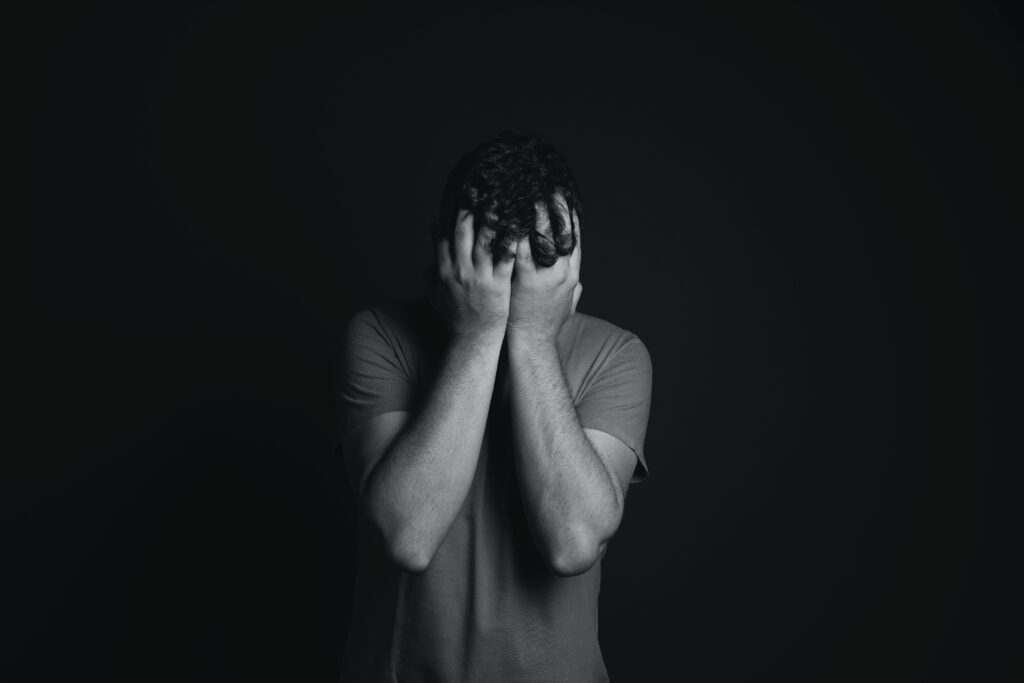7 Differences Between Burnout and Depression

Chronic fatigue, difficulty concentrating, difficulty sleeping, frequent lapses in memory, and emotional exhaustion. Picture someone in your mind experiencing all of these things. Now, does that someone sound like they’re burned out to you? Or do you think they may already be dealing with a case of clinical depression? To many of us, we’re not sure.
Burnout refers to a negative state of emotional, physical, and mental exhaustion caused by excessive stress and an inability to cope; while depression is defined as a mood disorder characterized by persistent feelings of sadness, emptiness, and hopelessness.
But because there’s so much overlap between symptoms of burnout and depression, it can often be a challenge to tell the two apart. But mistaking one for the other could lead to a lot of harmful effects, especially when trying to treat it! With that said, here are 7 important differences between burnout and depression:
1. Depression is a mental disorder.
Although burnout is a serious mental health issue, unlike clinical depression, it isn’t recognized as a diagnosable mental disorder by the American Psychological Association (APA, 2013). This is because it lacks what psychologists call the “4Ds of abnormality” – deviance, dysfunction, distress, and danger – which are the hallmarks for a psychiatric condition to be considered a mental illness. And though burnout certainly impairs our functioning and brings us a lot of distress, it’s not as serious of a threat to our mental health as depression. What’s more is, burnout only has three (3) identifiable symptoms (exhaustion, cynicism, and inefficacy) while you need to have experienced at least 5 out of 9, for a period no less than 2 weeks, to be diagnosed with depression.

2. Depression is more general.
Another fundamental way in which burnout and depression differ from one another is that the latter is more general than the former. Because burnout is brought about by prolonged periods of extreme stress (usually work- or academic-related), the negative psychological effects we experience because of it often go away once the stressor has been removed. Depression, on the other hand, is so much more pervasive because it permeates not only our school/work life, but also our social life, our home life, and even our enjoyment of our own hobbies and interests (Maslach, Schaufeli, & Leiter, 2001). Simply put, while trying to cheer someone up by taking their mind off of their problems may work for someone who’s burned out, it’s not going to do anything for those who suffer from depression.

3. Depression doesn’t always have a trigger.
Like we said before, burnout is most likely to happen at the onset of highly stressful situations, often in the school or work setting. Common examples include: studying for final exams, getting into a prestigious college, a big promotion at work, or preparing for the bar/board exam. But when it comes to depression, there isn’t always an obvious trigger for why we develop it. This is why depression is one of the most misunderstood mental illnesses out there, because even psychologists themselves have a hard time figuring out the reason behind it. From genetics, to upbringing, to chemical imbalance, even after decades of rigorous scientific study, psychologists remain uncertain as to the true nature of depression and the causes behind it (Schoenfeld, 2018).

4. Depression erodes your self-esteem.
While burnout and depression may feel very similar to those experiencing it, one characteristic found only in depression is a lowered sense of self-esteem. Many depressed patients struggle with feelings of worthlessness and even become suicidal a lot of the time because of it. Those who are burned out, on the other hand, feel the same loss in motivation, enjoyment, and interest, but their sense of self-esteem remains largely intact. And though they may sometimes feel frustrated, disappointed, or down about themselves, it’s usually only a particular stressor causing them to feel this way (i.e. hating yourself only because you failed a test).

5. Depersonalization is common in burnout.
Depersonalization is defined as a “persistent feeling of detachment from one’s self” and is commonly associated with PTSD, DID, substance abuse, and burnout (APA, 2013). This is most likely because people who are struggling with burnout have pushed themselves to the limit – physically, mentally, and emotionally – that it’s now become difficult for them to function normally. They’ve been working themselves so hard for so long, treating themselves more like an unstoppable machine for productivity than an actual human being with needs, that they start to lose touch with themselves. They don’t feel like themselves anymore; they’ve become numb to emotions; and they find it hard to enjoy all the things that used to make them happy because of how overwhelmed they’ve been with stress.

6. Burnout develops in stages.
Studies show that there are five (5) major stages of burnout with increasing degrees of severity: the honeymoon phase, the onset of stress, chronic stress, burnout, and habitual burnout. But when it comes to depression, there are no stages because depression doesn’t develop in a linear or progressive manner. Some people can have a depressive episode that only lasts a few weeks, be fine for years, and suddenly feel depressed again out of the blue; while others struggle with it for almost their entire lives, seemingly getting better only for it to get worse all over again (Gibson & Hategan, 2019).

7. Burnout is easier to treat.
Finally, but perhaps most importantly, because burnout isn’t yet a mental disorder, it’s much easier to treat than depression. Oftentimes, when you come to a therapist or a counselor with problems of burnout, they will advise you a few simple lifestyle changes (like sleeping earlier, starting a self-care routine, establishing boundaries, and learning better time management skills) and you’ll start to see improvements within a matter of weeks, depending on the severity of your burnout. As for depression, common treatment plans include not only lifestyle changes, but also anti-depressants, cognitive therapy, behavioral therapy, and psychodynamic therapy (Bianchi, Schoenfeld, & Laurent, 2015).

References:
- National Alliance Against Mental Illness (2018). Mental Health by The Numbers. Retrieved from https://www.nami.org/Learn-More/Mental-Health-By-the-Numbers
- American Psychological Association (2013). Diagnostic and Statistical Manual of Mental Disorders – 5th APA Publishing; Washington, DC.
- Maslach, C., Schaufeli, W., & Leiter, M. (2001). The Tired, Retired, and Recovering Physician: Professional Burnout Versus Major Depressive Disorder. Social Psychiatry; 175(8); 716-719.
- Schoenfeld, I. S. (2018). What is the Difference Between Burnout and Depression? An On-going Debate. Journal of Professional Psychology, 53(4); 218-219.
- Gibson, R., & Hategan, A. (2019). Burnout vs. Depression: Recognize the Signs. Current Psychiatry, 18(10); 41-42.
- Bianchi, R., Schoenfeld, I.S., & Laurent, E. (2015). Is Burnout Separable From Depression in Cluster Analysis? A Longitudinal Study. International Psychology, 50(11); 105-111.




Responses